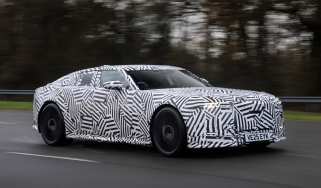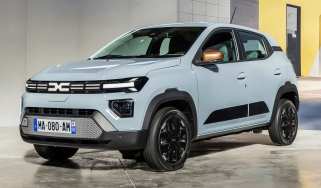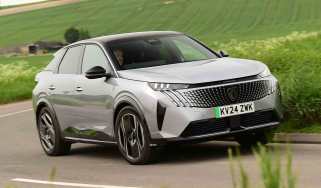UK electric car charger roll-out being undermined by misguided strategy
Strategy labelled ‘biggest waste of taxpayers’ money ever’ as UK authorities race to install low-power pavement chargers
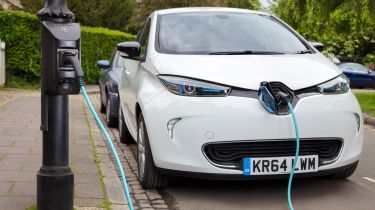
The Government’s target of 300,000 public chargers by 2030 could be woefully short of the numbers required. It’s alleged that a lack of strategic planning means taxpayer cash is being thrown at the wrong types of charger, as councils race to maximise the number of low-powered on-street plug-in points while failing to meet rising demand for high-power ultra-rapid charging hubs.
According to the Department for Transport’s latest modelling, the UK will need between 250,000 and 550,000 public EV chargers by 2030 to cope with the Government’s ban on new petrol and diesel-engined cars and an all-electric new-car fleet.
That means meeting the Government’s 300,000 target could leave UK drivers with not much more than half the number of chargers actually required. But some experts say the problem is compounded by a failure to adequately address the type and location of ultra-rapid charging that EV drivers are increasingly demanding, and a policy vacuum when it comes to providing infrastructure for rural communities.
According to the chief executive of chargepoint provider Be.EV, Asif Ghafoor, the official focus on numerical targets means local authorities are rushing to install low-powered on-street chargers instead of delivering the infrastructure drivers will need.
“Unfortunately, government policy through LEVI [the government’s Local Electrical Vehicle Infrastructure Fund] is encouraging quantum, and it’s the biggest waste of taxpayers’ money we’re ever going to see,” the outspoken chief exec says about the focus on lamppost-type charging.
Ghafoor says consumer demand for low-power 2-3kW on-street charging is “pretty much flatlining” as car batteries are getting bigger and drivers who need public chargers simply don’t want to wait up to 20 hours to recharge. He points out that, in terms of deliverable electric miles, a single charging hub with 10 150kW chargers, each able to top-up cars in half an hour, can do the work of 500 on-street 3kW sockets.
“What’s missing in this space is thinking about the customer experience, and putting in the chargers which people want to use,” he says. “What’s happening is that government grant funding is just offering cash. They’re encouraging gully charging, lamppost charging, and so we’re seeing councils such as Liverpool claiming to be the biggest EV charging council in Britain because they’ve installed 300 lamppost chargers at 2-3 kiloWatts. That’s just the worst customer experience you’re ever going to find.”
According to Ghafoor, the Government’s LEVI fund, designed to support development of facilities for drivers without home chargers, needs a radical rethink. “Government has dictated they want money deployed in the full range, from gully charging and lamppost chargers to fast and rapid chargers,” he says, pointing to the example of Cheshire East being awarded £3m from the LEVI fund, and “realising they can have 10 ultra-rapid chargers or a thousand lampposts”.
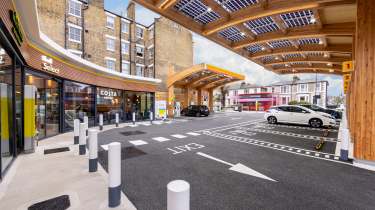
Be.EV’s CEO reckons the solution is for councils to focus on providing access to land they own at car parks and the like, so infrastructure companies can respond to the commercial opportunity that exists in these locations. Then Government funds should be directed away from urban slow chargers, and towards charging provision for rural communities where there’s no commercial business case to invest in the charging infrastructure.
“The right solution, much like petrol stations, is a place to go and charge that can fit into your lifestyle, because very few people are charging every day. Community hubs, where you know you’re going to get an ultra-rapid charge, and you plug in for 15 minutes while you go and get a coffee,” he says, noting “as batteries get bigger, you’re going to be demanding more power”.
Currently, Ghafoor says, many local authorities don’t do anything until they get LEVI funding. Then they “undertake a massive procurement program, buy the wrong-speed chargers, and by the time they’re installed, that’s five years gone.”
He adds: “We’re really pushing to get rid of all this LEVI nonsense, and for the Government to stop wasting money and to deploy it in the hard-to-reach rural areas, where we will never put assets in because it’s never going to make commercial sense.”
Antoine Picron is senior policy manager for the UK and Ireland at CPO ChargePoint, which operates a network including many lower-powered AC chargers.
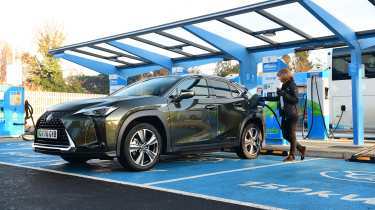
“While the argument for ultra-rapid charging points is important, setting a clear numerical target for public charging infrastructure remains critical in driving momentum towards electrification,” he says. “Public AC charging, for example, plays a crucial role in addressing the needs of residents without off-street parking, and a dense network of accessible AC chargers ensures inclusivity in the electric car transition and supports a range of user needs. While ultra-rapid hubs are an essential part of the ecosystem, we must balance their development with widespread AC charging to meet diverse consumer needs and drive forward a robust EV infrastructure.”
Commenting on the arguments raised, Vicky Read, the CEO of infrastructure trade body ChargeUK, says: “The Government’s 300,000 chargepoint figure is an estimation of the minimum number of chargepoints required by 2030 rather than a target.
“But this is just one way of measuring how well the rollout is going – total charging capacity and proximity to chargers are other metrics,” she said. “Ultimately, key to the EV transition is ensuring that the right chargers need to be available in the right place, so that drivers have confidence that the infrastructure they need will be there for them.”
Roy Williamson, Executive Chair at chargepoint provider Gridserve, told us: “At the current rate of expansion, the UK is set to exceed 300,000 public chargers by 2030. However, simply increasing the number of chargers is not enough. We must ensure these chargers are placed in locations that maximise convenience and accessibility for all drivers.”
Ian Johnston, CEO of Osprey Charging Network said: “The single numerical target masks the regional differences in population, housing stock and vehicle ownership that determine the composition of charging infrastructure required across the country. It leads to unhelpful criticism that geographical distribution of public charging is uneven, which fails to take account of these nuances.
He adds: “We need much more charging where there are more cars, and more cars that don’t sleep on a private driveway.”
DFT comment
The Department for Transport told Auto Express it’s investing over £2.3billion to support the transition to zero-emission vehicles, building on the 73,000 public chargepoints already available, and has launched a consultation to engage the sector on shaping the road to net zero.
“Nearly 20,000 public chargepoints were added in England last year – making 2024 a record-breaking year for EV infrastructure,” said a spokesperson. “This comes alongside £6billion of private investment in the pipeline by 2030, helping EV owners drive with the confidence that they will never be too far away from a chargepoint.”
Making the switch? These are the best electric cars you can buy...
Find a car with the experts



